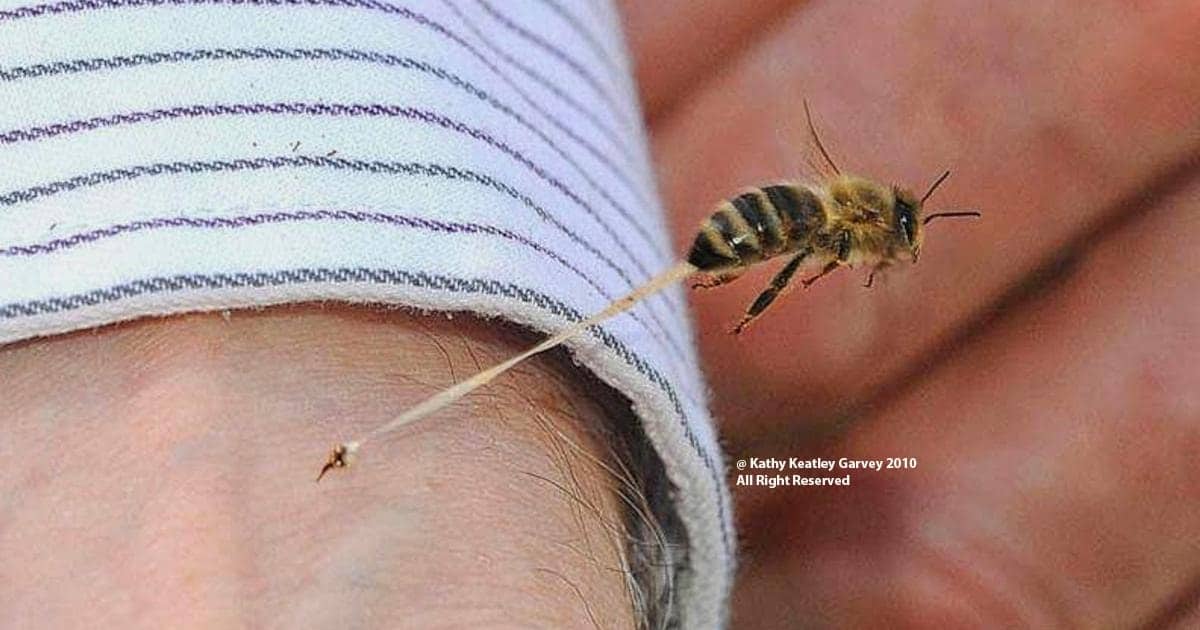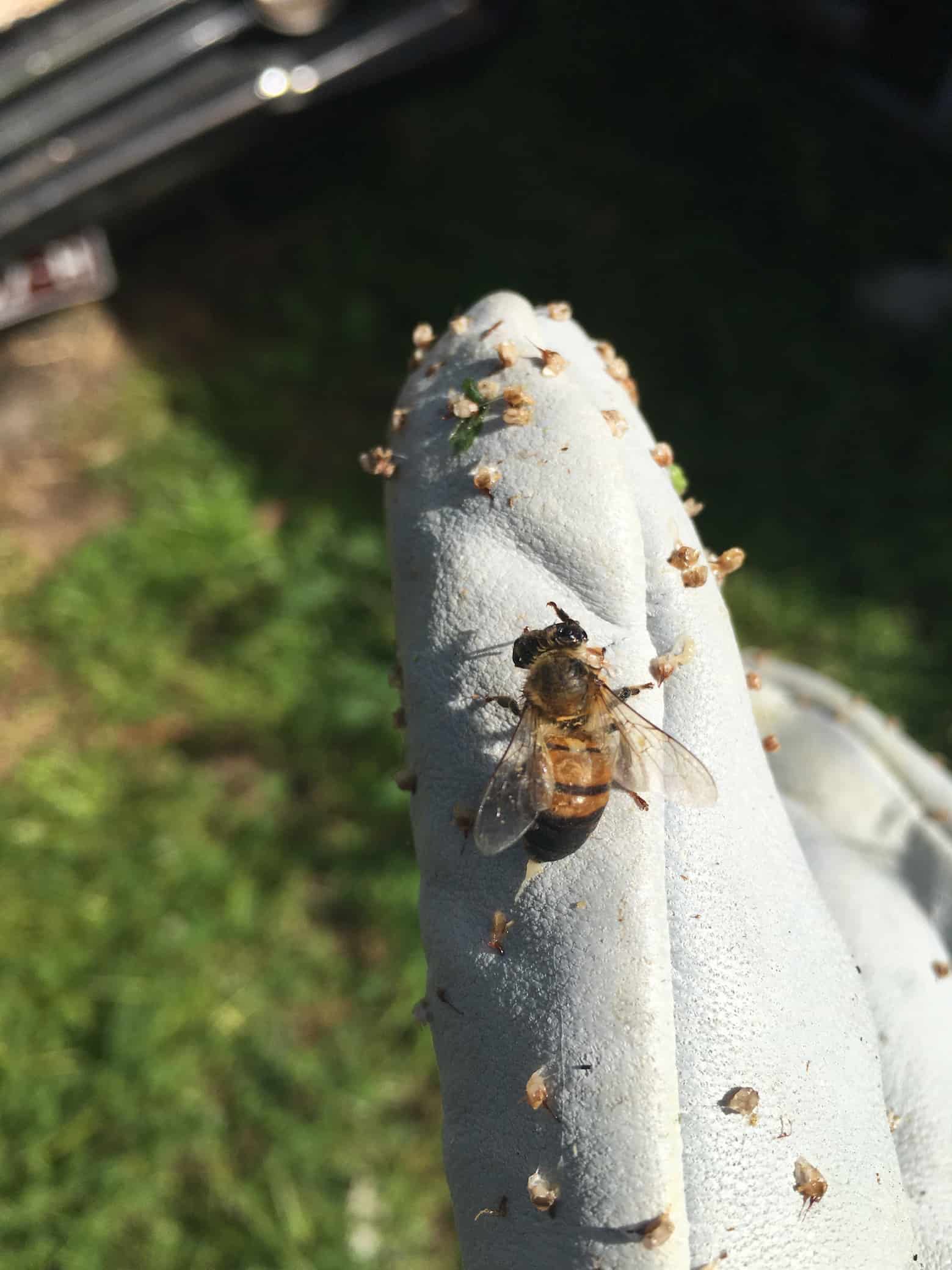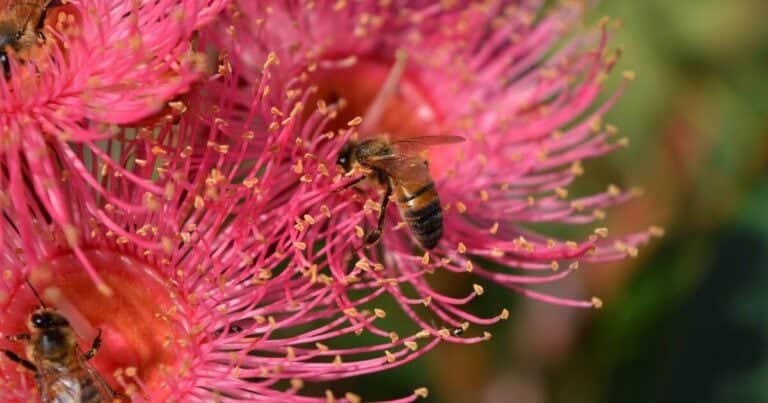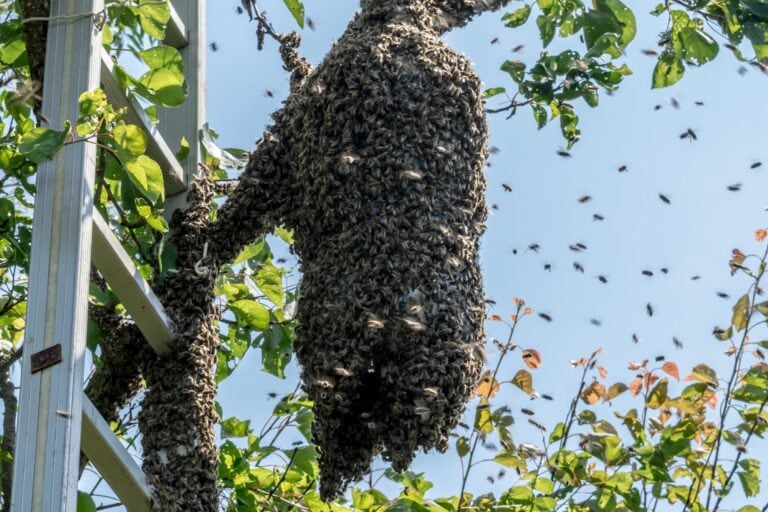Anatomy Of A Bee Sting
No one like to be the recipient of a bee sting! Here’s what happens when you get stung… the anatomy of a bee sting!

It’s common knowledge that bees can deliver a painful sting. And in doing so, the stinger is ripped free from the bee’s abdomen, resulting in its imminent demise. This would suggest a rather primitive apparatus, but in fact, the honey bee’s stinger is a highly complex and efficient organ.
The stinger is a modified ovipositor, which the bees’ ancestors used to deposit their eggs into the bodies of insect hosts.
The evolution of venom made prey items much more manageable! Since the ovipositor is a female reproductive organ, only female bees have stings. In fact, some species of bees do not possess stings at all. Most other bees and wasps, along with queen honey bees, have a smooth stinger that allows them to sting repeatedly. Only the worker honey bee has a barbed stinger which can become lodged in the relatively thick skin of birds and mammals; tearing loose from the worker’s body and causing her death within minutes.
So although worker honey bees never usually lay eggs, they have retained the modified ovipositor/stinger in order to defend the hive. Bees, like mosquitos, will optimise their attack by targeting the face of an intruder – sensing high concentrations of carbon dioxide in expired air.
The entire stinging apparatus is withdrawn into a special sting chamber when not in use. The bee will thrust the sting perpendicularly into the skin of an unfortunate interloper, thereby ensuring venom is delivered deep into the tissues via the shortest possible route.
The shaft of the sting comprises two barbed, opposing lancets and a dorsal stylet which together surround a central canal. The combined, tubular cross section makes this structure extremely stiff. The stylet terminates in a bulb which acts as a venom reservoir and is connected to the venom sac. Paired muscles drive the lancets up and down alternately, like a pair of pistons, while at the same time operating ‘umbrella’ valves that squeeze venom down the central canal. Hence, it is sometimes possible to feel small vibrations emanating from a sting left in the skin.
This efficient stinging mechanism can quickly envenomate a relatively large area of tissue. In addition, the sting is equipped with its own ganglion (or collection of controlling nerve cells), which continues to propel the lancets deeper into the victim’s flesh and pump venom into the wound for several minutes after detachment from the bee. Therefore, if you do get stung, you should remove the sting as quickly as possible.
Bee venom is called apitoxin, of which the main active component is a peptide called melittin that is responsible for causing considerable pain in vertebrates! The venom destroys the fatty lining of cells, as well as mast cells, which form part of the immune system. In response, histamine is released, which causes the blood vessels to dilate, enabling a faster immune response. This also results in swelling and redness around the site of the sting. A severe allergic reaction occurs when too much histamine is released, causing extreme dilation of blood vessels, and a rapid drop in blood pressure, leading to a dangerous condition called anaphylaxis or anaphylactic shock.
When a bee stings, alarm pheromones are also released which encourages other bees to join the fray and eliminate the potential threat. These pheromones are not easily shed, and apparently, smell vaguely like bananas!
Finally, honey bees are most likely to sting when they perceive a possible threat to the hive. Foraging bees and swarms are unlikely to be aggressive, however, if you do encounter a swarm in the vicinity of your home, it is best to seek the advice of a professional beekeeper.





